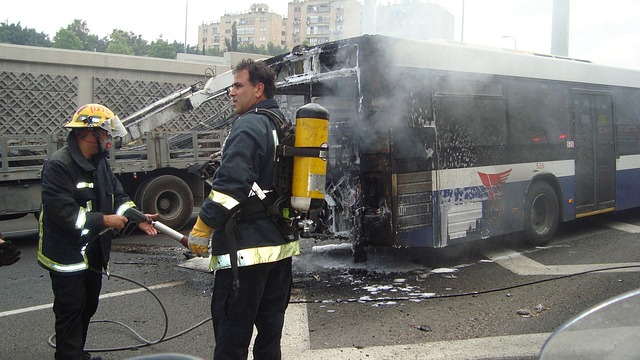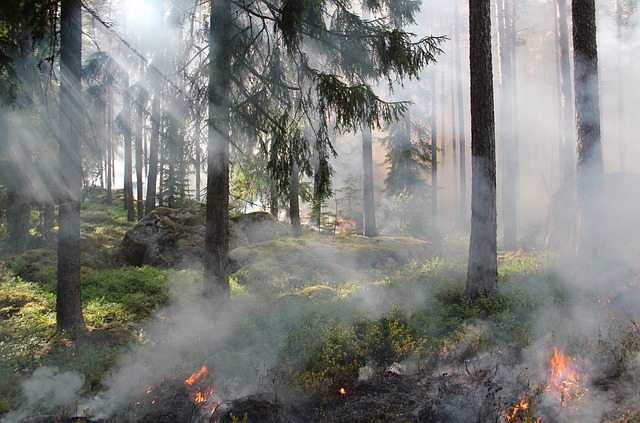Real estate investors play a vital role in California's post-fire housing market, providing capital for rebuilding and contributing to local economies. By purchasing fire-damaged properties at discounted rates, they can achieve significant profits while aiding community recovery. Navigating repairs, marketing, legalities, and insurance claims strategically is key to success in this niche market. Building relationships with local professionals ensures effective transformation of damaged homes into saleable assets.
Real estate investors play a pivotal role in shaping California’s housing market, especially in regions prone to wildfires. With the increasing frequency and severity of these natural disasters, understanding the motivations and strategies of these investors is crucial. This article delves into their unique opportunities, from acquiring fire-damaged properties at competitive prices to revitalizing affected areas. We explore key aspects, including legal considerations, insurance claims, and building strong local partnerships, offering insights for both investors and those looking to sell in California’s post-fire landscape.
- Understanding Real Estate Investors: Their Role and Motivation
- The Market for Fire-Damaged Properties in California
- Strategies for Selling Fire-Damaged Homes Effectively
- Legal Considerations and Insurance Claims for Investors
- Building Relationships with Local Contractors and Real Estate Agents
Understanding Real Estate Investors: Their Role and Motivation

Real estate investors play a pivotal role in shaping California’s housing market, especially when it comes to unique properties like those affected by fire damage. These investors are motivated by various factors, from financial gains to societal contributions. Many see purchasing and rehabilitating fire-damaged homes as an opportunity to not only restore communities but also turn a profit. In the aftermath of natural disasters or fires, these investors step in, providing essential capital for rebuilding efforts.
Their motivation often extends beyond financial returns. Some real estate investors are driven by a sense of social responsibility, aiming to revitalize affected areas and support local economies. By investing in fire-damaged properties, they contribute to the recovery process, ensuring that communities can thrive again. This involves not only fixing homes but also promoting sustainable development practices to create resilient neighborhoods in California.
The Market for Fire-Damaged Properties in California

In California, the market for fire-damaged properties presents a unique opportunity for real estate investors. With frequent wildfires affecting various regions across the state, many homeowners are left with the challenging task of selling their properties at a loss or rebuilding from scratch. This creates a niche market where investors can step in and capitalize on these situations. Fire-damaged homes often become available at discounted prices due to the extensive repairs required, providing an attractive entry point for those looking to invest in real estate.
Investors who specialize in acquiring and rehabilitating properties in California’s fire-prone areas can benefit from government incentives and grants aimed at encouraging rebuilding efforts. These financial assistance programs can significantly reduce the cost of purchasing and restoring fire-damaged homes, making them more viable investment options. By focusing on these specific properties, investors contribute to the local community’s recovery while potentially achieving substantial returns once the properties are restored and sold.
Strategies for Selling Fire-Damaged Homes Effectively

When it comes to selling fire-damaged homes in California, a strategic approach is essential to navigate this challenging process effectively. After a fire, properties often require significant repairs and restoration work, which can deter potential buyers. Therefore, investors must focus on presenting the home’s potential while being transparent about the damage. One effective strategy is to engage professional contractors who can assess and repair the damage, ensuring the property meets safety standards and appears market-ready. By prioritizing thorough renovation, investors can increase the home’s value and appeal to a broader range of buyers.
In California’s competitive real estate market, highlighting the benefits and advantages of the property post-restoration is key. Investors should consider marketing strategies that emphasize the unique features and potential of the home. This may include showcasing the updated amenities, modern design choices, or any energy-efficient upgrades made during the renovation process. Additionally, providing clear and detailed information about the fire damage history can build trust with prospective buyers, ensuring a transparent sale.
Legal Considerations and Insurance Claims for Investors

When it comes to real estate investing, especially in California, understanding legal considerations and insurance claims is paramount. Investors must be aware of the complex regulations surrounding the sale of fire-damaged properties. In California, where natural disasters like wildfires are prevalent, investors need to navigate a specific set of rules when dealing with such properties. These include obtaining necessary permits for reconstruction and adhering to building codes, which can vary widely across different cities and counties.
Insurance claims play a crucial role in this process. Investors should ensure they have adequate coverage for their investment, including policies that cover both the structure and potential liability associated with selling fire-damaged property. This includes understanding the difference between replacement cost value and actual cash value, as well as what is covered under various types of insurance policies, such as those offered by the California Department of Insurance. Proper documentation and expert advice are essential to navigate these legal and insurance complexities successfully when selling fire-damaged properties in California.
Building Relationships with Local Contractors and Real Estate Agents

Building strong relationships with local contractors and real estate agents is a strategic move for any real estate investor, especially when focusing on selling fire-damaged properties in California. These professionals are integral to the successful transformation of damaged homes into market-ready assets. By fostering connections within the local community, investors can access reliable resources for renovation and repair, ensuring that each property is restored to its highest potential.
When dealing with fire-damaged real estate in California, a network of trusted contractors specialized in restoration work becomes invaluable. These experts can provide efficient and cost-effective solutions, allowing investors to navigate the challenges of selling such properties effectively. Engaging with local real estate agents who specialize in this niche is also beneficial, as they possess extensive knowledge about market trends and buyer preferences for these unique listings.
Real estate investors play a pivotal role in revitalizing communities affected by fires in California. By understanding their motivations, navigating legal complexities, and fostering partnerships with contractors and agents, investing in and effectively selling fire-damaged properties can become a powerful tool for economic recovery and community rebuilding. For those looking to capitalize on this market, adopting strategic approaches to marketing and leveraging local expertise is key to success in selling fire damaged property California.






